How to find the right nylon cable glands
Nylon Cable Glands are widely used in the electrical, communications and data industries. It is very important to choose the right nylon cable glands for your equipment. The best nylon cable glands is not necessarily the most expensive, but choose the most suitable and economical solution.
Consider the folling 3 factors to choose the best nylon cable glands for your application.

Condsider the IP Rating of Nylon Cable Glands
The main function of nylon cable glands are used to firmly secure electrical cable entering a piece of equipment, and provide a seal between the external and internal surfaces of the equipment, choose high level IP rating is important.
An IP Rating represents the level of protection provided by a device against the intrusion of solid objects and liquids.
The most common IP ratings of nylon cable glands are probably 65,66,67 and 68, you can find the defined as below for quick reference.
IP65 – IP rated as “dust tight” and protected against water projected from a nozzle.
IP66 – IP rated as “dust tight” and protected against heavy seas or powerful jets of water.
IP67 – IP rated as “dust tight” and protected against immersion. for 30 minutes at depths 150mm – 1000mm
IP68 – IP rated as “dust tight” and protected against complete, continuous submersion in water.
Jixiang Connector nylon cable glands can reach IP68 level and rasistant to salt water, weak acid, alcohol, oil, grease, and common solvency.
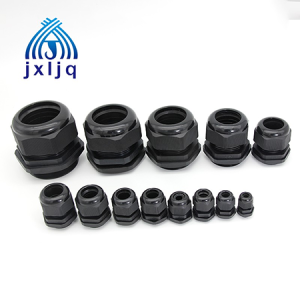
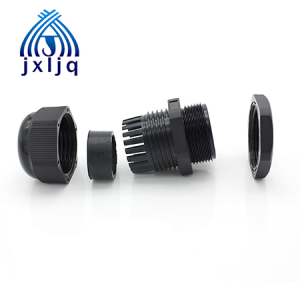
Consider the UL94 Classification of Nylon Cable Glands
UL 94, the Standard for Safety of Flammability of Plastic Materials for Parts in Devices and Appliances testing, is a plastics flammability standard released by Underwriters Laboratories of the United States.
UL94 HB/V material will be rated:
V-0: if flame extinguishes within 10 seconds with no dripping
V1: if flame extinguishes within 30 seconds with no dripping
V2: if flame extinguishes within 10 seconds with dripping
| Class | Orientation of Test Sample | Definition | Time of Burn Allowed | Flaming | Non-Flaming |
| UL 94 HB | Horizontal | Slow Burning | A. Not have a burning rate exceeding 40mm/min. over a 75mm span for specimens having a thickness of 3.0 to 13mm, or |
||
| B. Not have a burning rate exceeding 75mm/min. over a 75mm span for specimens having a thickness less than 3.0mm, or |
|||||
| C. Cease to burn before the 100mm reference mark. | |||||
| UL 94 V-2 | Vertical | Burning Stops | 30 seconds | Yes | Yes |
| UL 94 V-1 | Vertical | Burning Stops | 30 seconds | No | Yes |
| UL 94 V-0 | Vertical | Burning Stops | 10 seconds | No | Yes |
You can choose a higher grade nylon cable glands to improve safety according to the environment of use.
Jixiang Connector provide high quality nylon cable glands are mainly made of UL approved nylon PA66(Flammability UL94V-2) and UL 94V-0 nylon PA66 material can be customized, can hold cable firmly and have a wider cable range.
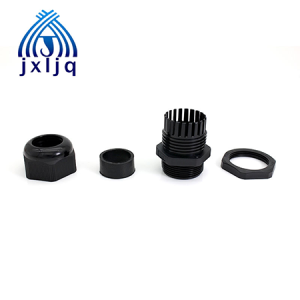
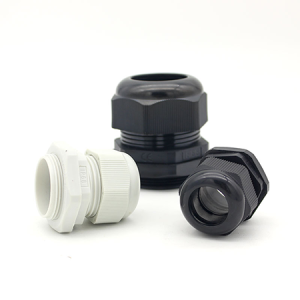
Consider the UV-resustant of Nylon Cable Glands
UV resistance, known as photodegradation, refers to a substance’s ability to avoid degradation caused by the absorption of UV radiation.
When you design components for outdoor use and industrial applications generally require higher UV resistant nylon cable glands to maintain optimal quality and performance.
Using the UV-resistant nylon cable glands will not typically change in appearance be in through yellowing, leaching dye color, bleaching, or the formation of stress cracks and hardness, and will not become brittle.
Jixiang Connector can customize UV-resistant nylon cable glands, are great candidates for outdoor applications use.

Nylon cable cable gland for outdoor use are easily affected by wind, rain, ice, snow and environmental climate, due to their working conditions are harsh. Jixiang Connector is a professional manufactuer of nylon cable glands, not only offer high quality and durable cable glands, but also provide custom services to suit every environment use.
Any questions or inquiry, please don’t hesitate to contact us.


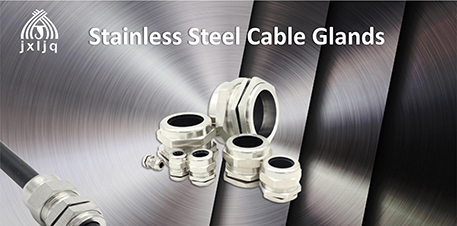
 Classification of stainless steel
Stainless steel is an alloy of iron that is resistant to rusting and corrosion.
Stainless steel’s corrosion resistance and mechanical properties can be further enhanced by adding other elements, such as nickel, molybdenum, titanium, niobium, manganese, etc.
There are five main families, which are primarily classified by their crystalline structure: austenitic, ferritic, martensitic, duplex, and precipitation hardening.
The 300-series formulas is a popular choice for a wide variety of cable glands applications. The 304, 316 and 316L stainless steel cable glands are the most commonly specified.
Classification of stainless steel
Stainless steel is an alloy of iron that is resistant to rusting and corrosion.
Stainless steel’s corrosion resistance and mechanical properties can be further enhanced by adding other elements, such as nickel, molybdenum, titanium, niobium, manganese, etc.
There are five main families, which are primarily classified by their crystalline structure: austenitic, ferritic, martensitic, duplex, and precipitation hardening.
The 300-series formulas is a popular choice for a wide variety of cable glands applications. The 304, 316 and 316L stainless steel cable glands are the most commonly specified.
 What Is The Difference Between 304 And 316 Stainless Steel Cable Glands?
Simply distinguish them, 304 contains 18% chromium and 8% or 10% nickel while 316 contains 16% chromium, 10% nickel and 2% molybdenum. 304L or 316L is their low-carbon versions.
You can find the specific difference between SS304 and SS316 from the table below:
What Is The Difference Between 304 And 316 Stainless Steel Cable Glands?
Simply distinguish them, 304 contains 18% chromium and 8% or 10% nickel while 316 contains 16% chromium, 10% nickel and 2% molybdenum. 304L or 316L is their low-carbon versions.
You can find the specific difference between SS304 and SS316 from the table below:
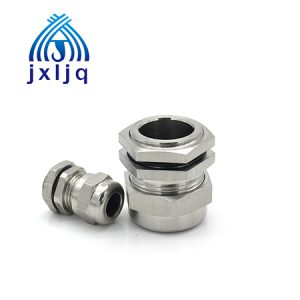
 In different applications,both 304 stainless steel cable glands and 316 stainless steel cable glands have pros and cons to consider.
When exposure to chemicals or a marine environment, 316 stainless steel cable glands is the better choice, due to 316 stainless steel cable glands is more resistant than 304 to salt and other corrosives.
Such as SS316 stainless steels cable glands are required in the manufacture of certain pharmaceuticals in order to avoid excessive metallic contamination.
On the other hand, 304 stainless steel cable glands is a more economical choice, when it doesn’t need strong corrosion resistance.
In different applications,both 304 stainless steel cable glands and 316 stainless steel cable glands have pros and cons to consider.
When exposure to chemicals or a marine environment, 316 stainless steel cable glands is the better choice, due to 316 stainless steel cable glands is more resistant than 304 to salt and other corrosives.
Such as SS316 stainless steels cable glands are required in the manufacture of certain pharmaceuticals in order to avoid excessive metallic contamination.
On the other hand, 304 stainless steel cable glands is a more economical choice, when it doesn’t need strong corrosion resistance.

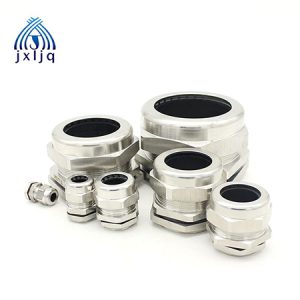 Jixiang Connector is a professional cable glands manufacturer and provide SS304 and SS316L stainless steel cable glands, available in a variety of thread types, Metric thread, PG thread, NPT thread and G thread, clamping range from 3mm to 90mm suitable for all sizes of cables.
Hope this article was useful and you also can contact us for details.
Our expert team are standing by and ready to help.
Jixiang Connector is a professional cable glands manufacturer and provide SS304 and SS316L stainless steel cable glands, available in a variety of thread types, Metric thread, PG thread, NPT thread and G thread, clamping range from 3mm to 90mm suitable for all sizes of cables.
Hope this article was useful and you also can contact us for details.
Our expert team are standing by and ready to help.
 Plastic cable glands and Metal Cable Glands for IP Enclosures
Plastic cable glands and metal cable glands are the most common cable glands used in IP enclosures, designed to attach and secure the end of an electrical cable to the enclosures and metal cable glands not only can help enclosures reaches the specified IP level.
Jixiang’s plastic cable glands are made of nylon PA66, metal cable glands are made of nickel plated brass or stainless steel.
Both of plastic cable glands and metal cable glands can reach protection level IP68, resistant to salt water, weak acid, alcohol, oil, grease and common solvency. It’s the best solutions for IP enclosures.
Plastic cable glands and Metal Cable Glands for IP Enclosures
Plastic cable glands and metal cable glands are the most common cable glands used in IP enclosures, designed to attach and secure the end of an electrical cable to the enclosures and metal cable glands not only can help enclosures reaches the specified IP level.
Jixiang’s plastic cable glands are made of nylon PA66, metal cable glands are made of nickel plated brass or stainless steel.
Both of plastic cable glands and metal cable glands can reach protection level IP68, resistant to salt water, weak acid, alcohol, oil, grease and common solvency. It’s the best solutions for IP enclosures.
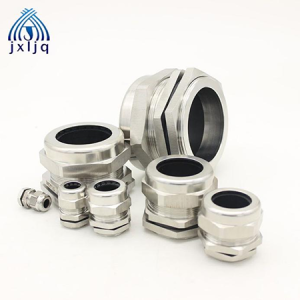
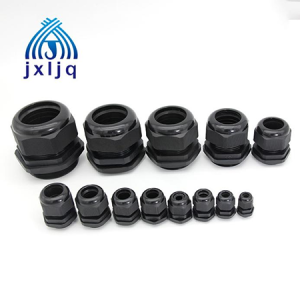 ATEX cable glands for explosion proof enclosures
Explosion proof enclosure is a enclosure that sturdy enough to contain any kind of interior explosion and stop it from igniting flammable substances in the immediate area.
Explosion proof cable gland are installed at the cable entry of explosion proof enclosure to terminal the cable access,hold the force of being pulled out for cable and perform the connection management of cable ends.
Jixiang’s explosion proof cable glands are made of nickel plated brass or stainless steel, withe quick installation, safety, reliability of good protection.And have ATEX certification, can do single pressure or double pressure use.
Believe our ATEX cable glands will be the best choice for your explosion proof enclosures.
ATEX cable glands for explosion proof enclosures
Explosion proof enclosure is a enclosure that sturdy enough to contain any kind of interior explosion and stop it from igniting flammable substances in the immediate area.
Explosion proof cable gland are installed at the cable entry of explosion proof enclosure to terminal the cable access,hold the force of being pulled out for cable and perform the connection management of cable ends.
Jixiang’s explosion proof cable glands are made of nickel plated brass or stainless steel, withe quick installation, safety, reliability of good protection.And have ATEX certification, can do single pressure or double pressure use.
Believe our ATEX cable glands will be the best choice for your explosion proof enclosures.
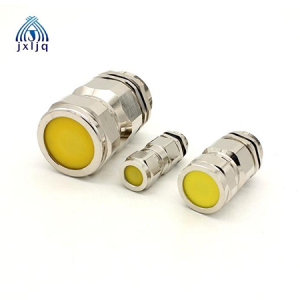
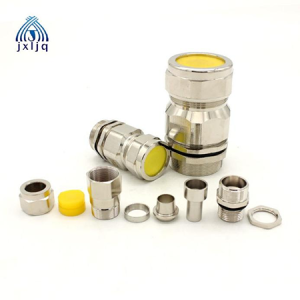 Jixiang Connector a professional manufacturer from china and offers a wide selection of cable glands to fit your needs.
Welcome to consult us to choose the suitable cable glands for your enclosure. We will be pleased to help you.
Jixiang Connector a professional manufacturer from china and offers a wide selection of cable glands to fit your needs.
Welcome to consult us to choose the suitable cable glands for your enclosure. We will be pleased to help you.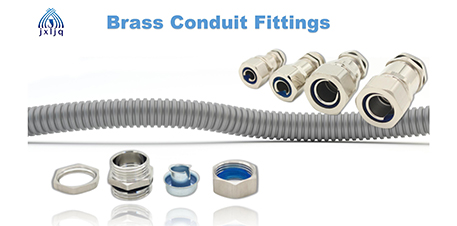
 Types of Brass Conduit Fittings
Standard Brass Conduit Fittings are the common conduit fittings. Jixiang’ brass conduit fittings are made of high quality nickel plated brass and can stand up to demanding wet and corrosive environments, including power generation, petrochemical, food, beverage, pharmaceutical plants and anywhere high performance is required.
Types of Brass Conduit Fittings
Standard Brass Conduit Fittings are the common conduit fittings. Jixiang’ brass conduit fittings are made of high quality nickel plated brass and can stand up to demanding wet and corrosive environments, including power generation, petrochemical, food, beverage, pharmaceutical plants and anywhere high performance is required.

 90 degree Brass Conduit Fittings
The 90 degree Brass Conduit Fittings is designed to 90-degree elbow that is particularly applicable for limited space where the wiring system. One end of the 90 degree brass conduit fittings with a metal ring is connected with the metal hose, and the other end is threaded to the cable box, switch box, distribution box, motor, etc
90 degree Brass Conduit Fittings
The 90 degree Brass Conduit Fittings is designed to 90-degree elbow that is particularly applicable for limited space where the wiring system. One end of the 90 degree brass conduit fittings with a metal ring is connected with the metal hose, and the other end is threaded to the cable box, switch box, distribution box, motor, etc

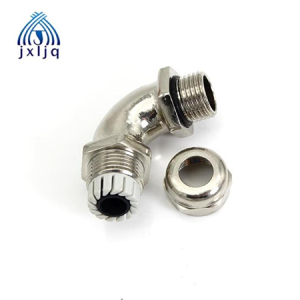 The parts of Brass Conduit Fittings:
Lock Nut, O-ring, Main Body, Ferrule,Ring, Sealing Nut
After adding claw and seal, the brass conduit fittings can also be connected to cables.
The parts of Brass Conduit Fittings:
Lock Nut, O-ring, Main Body, Ferrule,Ring, Sealing Nut
After adding claw and seal, the brass conduit fittings can also be connected to cables.
 How to install Brass Conduit Fittings?
1.Cutting Conduit
Conduit cutters can be used to cut nonmetallic conduit, Metallic conduit should be cut with a fine-tooth hacksaw or bandsaw. Ensure you make a straight, vertical cut.
2.Assembling Brass Conduit Fittings
First,place the sealing nut on the conduit followed by ring (note the orientation).
Next, cover the ferrule into the end of the conduit, then screw the main body, O-ring
Tight the Locknut in the end.
3.Connect to the Enclosure
Screw whole conduit and fit into the housing until it’s in the right place.
How to install Brass Conduit Fittings?
1.Cutting Conduit
Conduit cutters can be used to cut nonmetallic conduit, Metallic conduit should be cut with a fine-tooth hacksaw or bandsaw. Ensure you make a straight, vertical cut.
2.Assembling Brass Conduit Fittings
First,place the sealing nut on the conduit followed by ring (note the orientation).
Next, cover the ferrule into the end of the conduit, then screw the main body, O-ring
Tight the Locknut in the end.
3.Connect to the Enclosure
Screw whole conduit and fit into the housing until it’s in the right place.

 Jixiang Connector’s brass conduit fittings offer solutions for :
Dustproof and Waterproof
Continuous operation
Suitable for indoor or outdoor use
Reduced installation time & cost
Jixiang Connector is a professional manufacturer from China.
If you’re interested in brass conduit fittings, please contact us without any hesitation.
Jixiang Connector’s brass conduit fittings offer solutions for :
Dustproof and Waterproof
Continuous operation
Suitable for indoor or outdoor use
Reduced installation time & cost
Jixiang Connector is a professional manufacturer from China.
If you’re interested in brass conduit fittings, please contact us without any hesitation.

